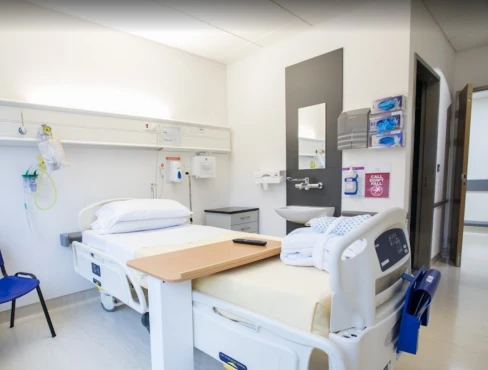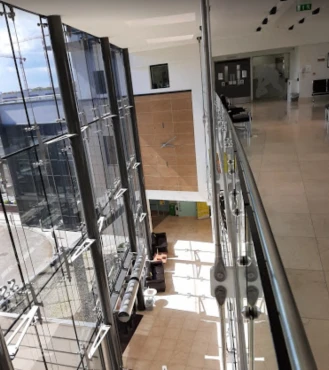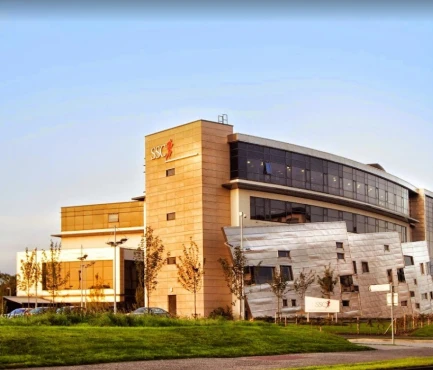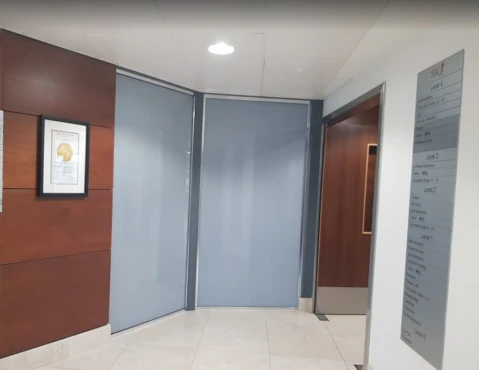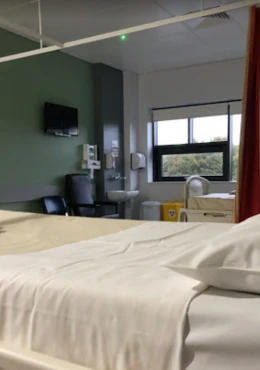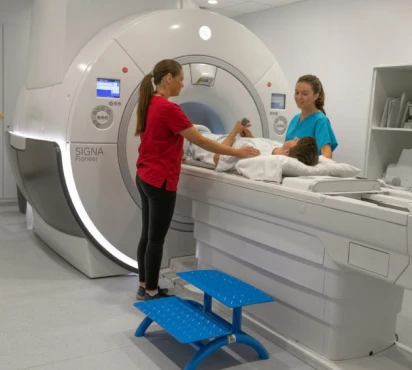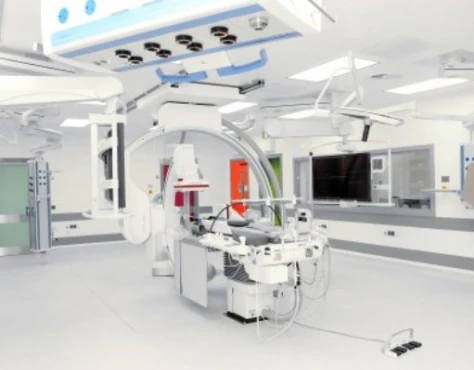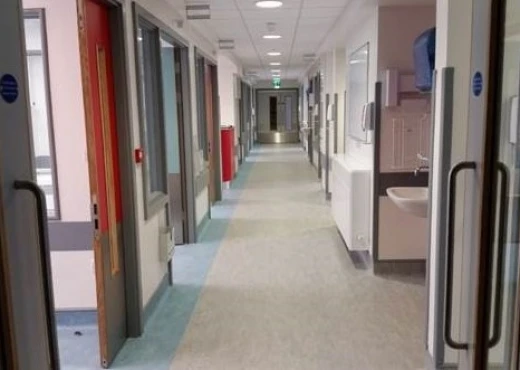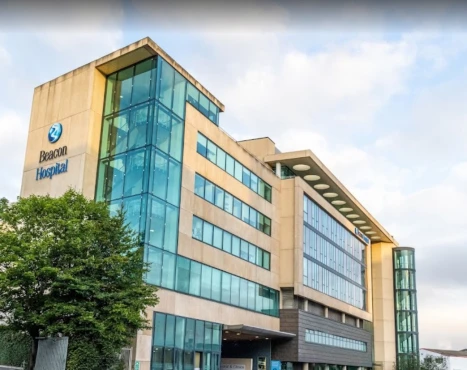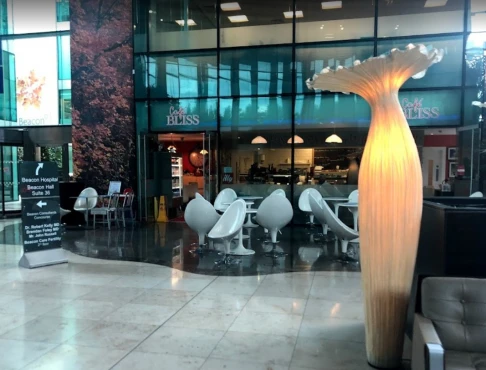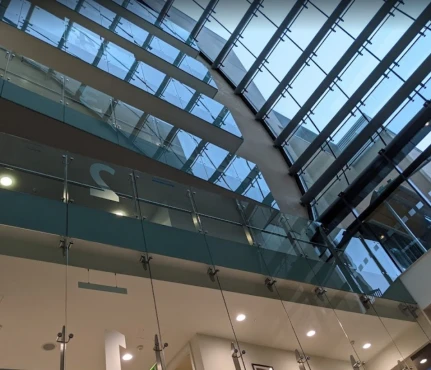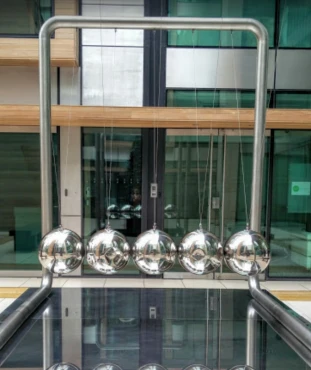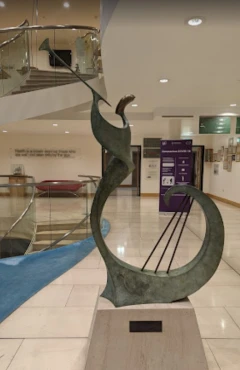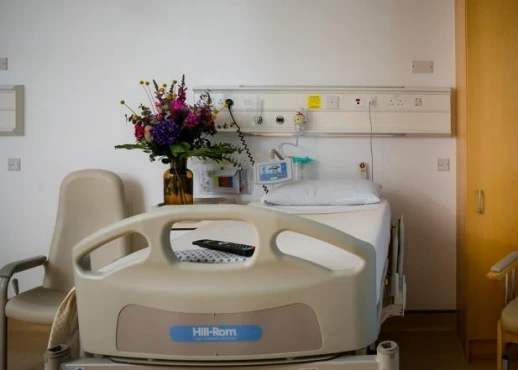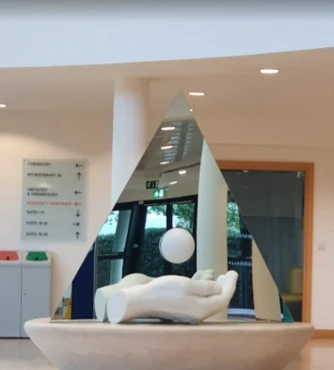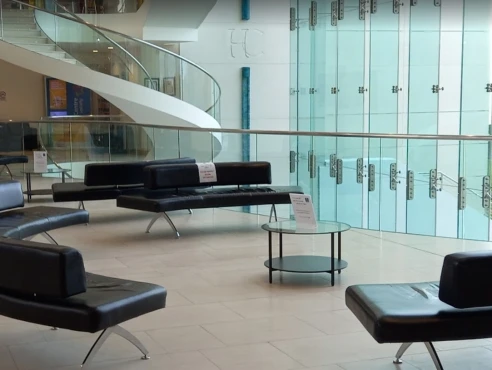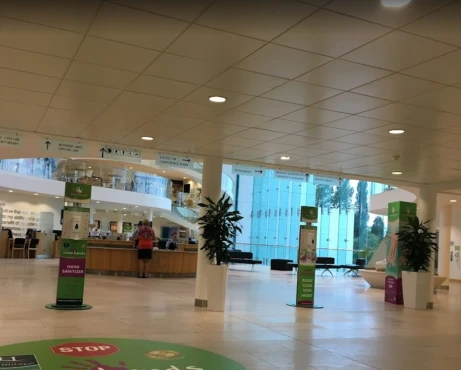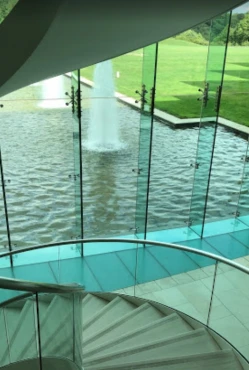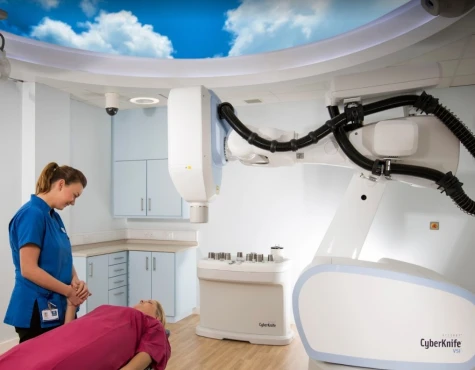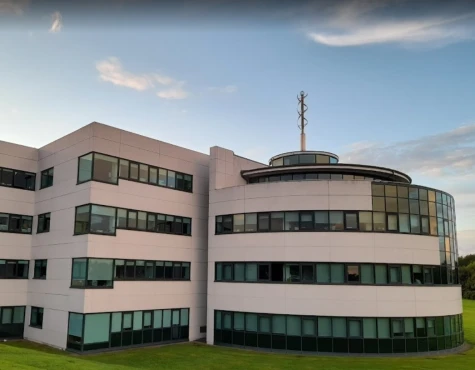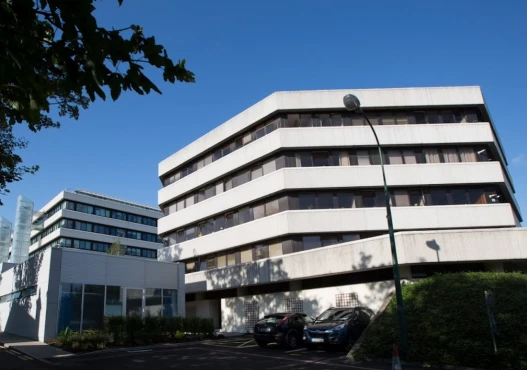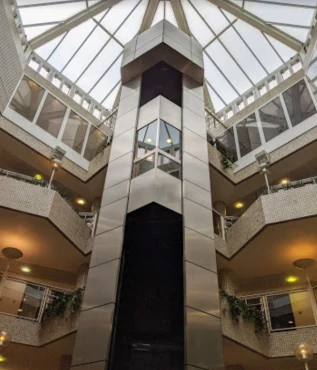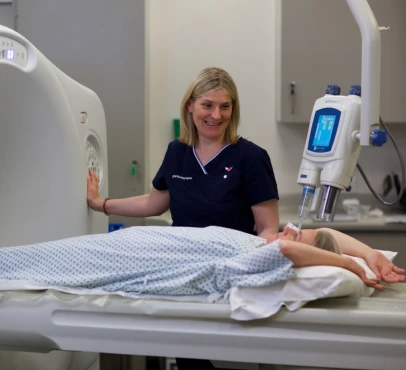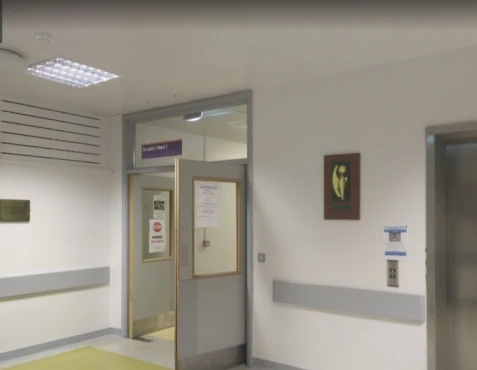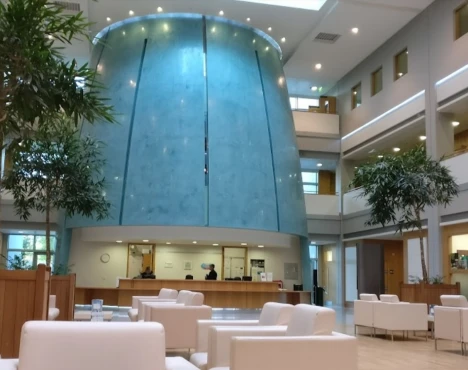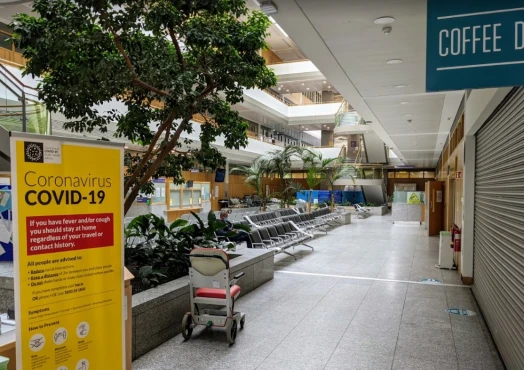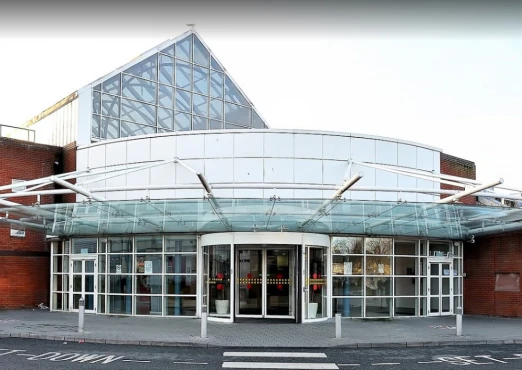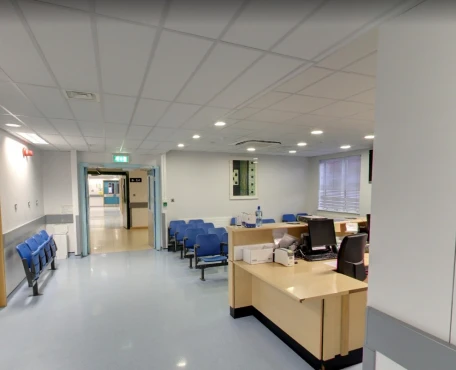Kidner procedure in 8 Orthopedic surgery clinics in Ireland
Top
Clinics
Price analysis
Ratings
More info
Quick navigation
8 clinics specializing in Orthopedic surgery providing
Kidner procedure
Kidner procedure involves the removal of an accessory navicular bone, a small bone on the inner side of the foot, to alleviate chronic pain or deformity. The procedure is typically done as an outpatient surgery.
Read more...
in Ireland.
1
from Lin Cata
October 27, 2023
Had an ACL surgery done by Mihai Vioreanu (June 22) and still in pain with a big scar below my knee. I would not recommend tbh!!
5
from Cathal Conroy
September 01, 2023
After being bed bound with crippling sciatica for over a month, recovering through exercise, then relapsing back to being bed bound, I decided to get a gp referral to the SSC for a specialist opinion. SSC were highly recommended by a friend who had a lot of work done on his ankle.
I had to get my initial MRI scan done externally for the referral as SSC were too busy to handle out patients. Once referred, I met my surgeon (Michael Kelleher) who found an extremely herniated lumbar disc, and I was given the option for surgery, which I agreed to.
I went in for surgery literally 7 days later (a miracle given Ireland's rep for medical backlogs), and I haven't looked back since.
Sciatica was gone immediately post-surgery, and the pain from the surgery itself was a minor inconvenience in comparison. I am now nearly 4 weeks post op and have regained full movement, ability to drive etc. I still need to take it easy to prevent the risk of re-herniation, but I can definitely say I have my life back again, and I am incredibly grateful to all the staff at SSC.
Edit : I am now 9 months post op and going for surgery was still the best decision I ever made. My back is perfect!
1
from Rafaela M Calabrese
August 22, 2023
No Ethos. They actually don't work with patients that need rehab, they make money with surgeries. I crossed over the country to get there and their "fantastic & professional" attention was to send me back to the hospital I was coming from. Oh! the doctor is very well able to read & write; he read me out my own file (who I carried a copy myself) and he did a summary letter of it to the same doctors that original wrote it down to my file. What a medical advice I got!!!!. On top of that they were training another doctor on this abilities... absolutely no shame. I got no answers to any of my questions, no information or review about my state or any recommendation about treatment or rehab, or anything to do... nothing, nothing at all except for a reading and a letter of information already known.
Prices for popular procedures:
-
Surgical neurolysis
≈ $3,103
-
Epidural block
≈ $969
-
Lumbar laminectomy
≈ $16,551
-
Instrumented spine stabilization
≈ $37,144
-
Spine dynamic stabilization
≈ $9,078
-
Cervical fusion
≈ $16,147
3.5
5 reviews
1
from Lin Cata
October 27, 2023
Had an ACL surgery done by Mihai Vioreanu (June 22) and still in pain with a big scar below my knee. I would not recommend tbh!!
5
from Cathal Conroy
September 01, 2023
After being bed bound with crippling sciatica for over a month, recovering through exercise, then relapsing back to being bed bound, I decided to get a gp referral to the SSC for a specialist opinion. SSC were highly recommended by a friend who had a lot of work done on his ankle.
I had to get my initial MRI scan done externally for the referral as SSC were too busy to handle out patients. Once referred, I met my surgeon (Michael Kelleher) who found an extremely herniated lumbar disc, and I was given the option for surgery, which I agreed to.
I went in for surgery literally 7 days later (a miracle given Ireland's rep for medical backlogs), and I haven't looked back since.
Sciatica was gone immediately post-surgery, and the pain from the surgery itself was a minor inconvenience in comparison. I am now nearly 4 weeks post op and have regained full movement, ability to drive etc. I still need to take it easy to prevent the risk of re-herniation, but I can definitely say I have my life back again, and I am incredibly grateful to all the staff at SSC.
Edit : I am now 9 months post op and going for surgery was still the best decision I ever made. My back is perfect!
1
from Rafaela M Calabrese
August 22, 2023
No Ethos. They actually don't work with patients that need rehab, they make money with surgeries. I crossed over the country to get there and their "fantastic & professional" attention was to send me back to the hospital I was coming from. Oh! the doctor is very well able to read & write; he read me out my own file (who I carried a copy myself) and he did a summary letter of it to the same doctors that original wrote it down to my file. What a medical advice I got!!!!. On top of that they were training another doctor on this abilities... absolutely no shame. I got no answers to any of my questions, no information or review about my state or any recommendation about treatment or rehab, or anything to do... nothing, nothing at all except for a reading and a letter of information already known.
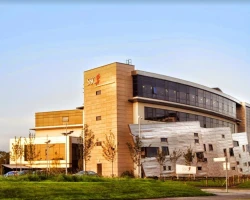
Dublin, Ireland
Specializations: Neurosurgery, Spine surgery, Orthopedic surgery, Oncology
Sports Surgery Clinic (SSC) is the leading private orthopaedic hospital in Ireland with both a national and international reputation for orthopaedic surgery and sports medicine.Facilities
read more
1
from Benjamin Ziepert
December 08, 2023
Parking is impossible, with no alternative offered. The hospital appears to be dirty and badly maintained. When we asked for directions to the private clinic, the staff repeatedly sent us in the wrong direction. There are areas that are not stroller friendly. It feels quite odd to have a one-parent policy because of COVID and then discover that almost no one wears a mask, even if they are obviously sick and coughing. Moreover, the waiting rooms were overcrowded. The experience with the doctor herself was very positive.
Update: In another visit an employee that smelled heavily of smoke and wasn’t treating our 6 month old daughter, just touched her hands and cheeks without asking while my wife was in the waiting area. My wife had to pull our daughter away from the employee but the employee still tried to touch her. I wrote a complaint but didn’t receive an answer. After several weeks I got an answer and three different managers wanted to call with us and improve the situation. The next time we visited, two employees repeated the same behavior instead of one. So much about the “respect social distancing” signs everywhere.
5
from Richard O'Rourke
December 07, 2023
Really great experience under difficult circumstances. While visiting from the US, our son had a fall resulting in a nasty cut to his forehead. We were seen promptly and each member of staff we interacted with, from front desk to the nurses to APN John were all wonderful. We were given great guidance and were in and out within an hour. Thank you everyone at CHI Crumlin!
1
from Kirsty Clifford
November 28, 2023
I have never experienced anything like this place in my entire life. We’re visiting family from the UK and the NHS is in a better state than this. Twice, I asked the same nurse for something and she was extremely rude to me both times to the point I actually snapped. We’re told they’d like to keep my daughter separate from other children and then we’re shoved at the bottom of the hallway beside some bins and the cleaning cupboard.
I asked for boiling water for my daughters bottles 3 times and was looked at like I had 2 heads. I finally got some at 2am.
Having to sit there alone with my sick child for 7 hours made me feel extremely vulnerable and it also would have been quicker to catch a flight back to the UK and go to A&E there! An absolute joke of a place - don’t get sick in ireland.
Prices for popular procedures:
-
Thoracoplasty including sternoplasty
≈ $14,071
-
Diagnostic thoracoscopy
≈ $6,081
-
Dual chamber pacemaker insertion
≈ $14,860
-
Coronary artery bypass graft (CABG)
≈ $52,994
-
Repair of diaphragmatic hernia
≈ $2,778
-
Heart valve replacement
≈ $62,615
3.8
5 reviews
1
from Benjamin Ziepert
December 08, 2023
Parking is impossible, with no alternative offered. The hospital appears to be dirty and badly maintained. When we asked for directions to the private clinic, the staff repeatedly sent us in the wrong direction. There are areas that are not stroller friendly. It feels quite odd to have a one-parent policy because of COVID and then discover that almost no one wears a mask, even if they are obviously sick and coughing. Moreover, the waiting rooms were overcrowded. The experience with the doctor herself was very positive.
Update: In another visit an employee that smelled heavily of smoke and wasn’t treating our 6 month old daughter, just touched her hands and cheeks without asking while my wife was in the waiting area. My wife had to pull our daughter away from the employee but the employee still tried to touch her. I wrote a complaint but didn’t receive an answer. After several weeks I got an answer and three different managers wanted to call with us and improve the situation. The next time we visited, two employees repeated the same behavior instead of one. So much about the “respect social distancing” signs everywhere.
5
from Richard O'Rourke
December 07, 2023
Really great experience under difficult circumstances. While visiting from the US, our son had a fall resulting in a nasty cut to his forehead. We were seen promptly and each member of staff we interacted with, from front desk to the nurses to APN John were all wonderful. We were given great guidance and were in and out within an hour. Thank you everyone at CHI Crumlin!
1
from Kirsty Clifford
November 28, 2023
I have never experienced anything like this place in my entire life. We’re visiting family from the UK and the NHS is in a better state than this. Twice, I asked the same nurse for something and she was extremely rude to me both times to the point I actually snapped. We’re told they’d like to keep my daughter separate from other children and then we’re shoved at the bottom of the hallway beside some bins and the cleaning cupboard.
I asked for boiling water for my daughters bottles 3 times and was looked at like I had 2 heads. I finally got some at 2am.
Having to sit there alone with my sick child for 7 hours made me feel extremely vulnerable and it also would have been quicker to catch a flight back to the UK and go to A&E there! An absolute joke of a place - don’t get sick in ireland.

Dublin, Ireland
Specializations: Cardiac surgery, Vascular surgery, Thoracic surgery, Neurosurgery, Spine surgery, Orthopedic surgery, Oncology
Sick babies and children from 0 to the eve of their 16th birthday are cared for in CHI at Crumlin. Children's Health Ireland at Crumlin
read more
2
from Beth Mcevoy
December 04, 2023
Had my appendix removed about two months ago only complains I have are in the emergency department I was told by one of the doctors I was getting surgery, he was then pulled out of the room by a nurse and never returned. When asked do I know what’s happening for my surgery later that night I hadn’t a clue cause the doctor never came back and told me what it was for or when.
The nurses on the ward when I went up where amazing looked after me so well really reassured me not to worry.
The nurse that took over their shift after was out of surgery was completely different I had gotten sick after coming out of surgery she left the sick bag on my table the entire night along with the blanket I had gotten sick on, I was too unwell to even realise I had been sleeping in my sick the whole night. The next nurse to take over her shift had not been too impressed with me for not throwing the sick bad out or the sheets even though my iv was attached to the bed so I couldn’t physically move from the bed to do anything.
It was only these two nurses that made my experience bad at the beacon as I’ve been before for a separate issue and it was absolutely amazing. I would recommend their hospital and I wouldn’t let them two nurses stop me from going to them again, but I would say it really did make me feel worse especially spending so much money to stay and be in their care.
5
from Sarah Schaub
November 27, 2023
As an American who has always been treated at the top clinic of Mayo Clinic my entire life I was scared to death to experience healthcare anywhere else. After breaking my foot I’ve been pleasantly surprised by how great the staff is here. The nurses, registration, consultants..everyone. I feel a lot of comfort after being seen here now multiple times and having surgery. It’s a different process than I’m used to but that’s a learning curve on my part. Thank you to all the staff for putting my anxiety to the way side.
5
from Kathy
October 20, 2023
Just back from taking my elderly mum for a CT in the Beacon Hospital. Lauren in radiology reception was fantastic with her. She was clear, helpful, friendly and very patient with with mum.
CT staff were fantastic and efficient, meaning we were in and out in no more than 30min.
Prices for popular procedures:
-
Video-assisted thoracic surgery (VATS)
≈ $38,966
-
Dual chamber pacemaker insertion
≈ $14,860
-
Foam sclerotherapy (Unilateral)
≈ $1,732
-
Coronary artery bypass graft (CABG)
≈ $52,994
-
Heart valve replacement
≈ $62,615
-
Heart valve repair
≈ $45,611
3.5
5 reviews
2
from Beth Mcevoy
December 04, 2023
Had my appendix removed about two months ago only complains I have are in the emergency department I was told by one of the doctors I was getting surgery, he was then pulled out of the room by a nurse and never returned. When asked do I know what’s happening for my surgery later that night I hadn’t a clue cause the doctor never came back and told me what it was for or when.
The nurses on the ward when I went up where amazing looked after me so well really reassured me not to worry.
The nurse that took over their shift after was out of surgery was completely different I had gotten sick after coming out of surgery she left the sick bag on my table the entire night along with the blanket I had gotten sick on, I was too unwell to even realise I had been sleeping in my sick the whole night. The next nurse to take over her shift had not been too impressed with me for not throwing the sick bad out or the sheets even though my iv was attached to the bed so I couldn’t physically move from the bed to do anything.
It was only these two nurses that made my experience bad at the beacon as I’ve been before for a separate issue and it was absolutely amazing. I would recommend their hospital and I wouldn’t let them two nurses stop me from going to them again, but I would say it really did make me feel worse especially spending so much money to stay and be in their care.
5
from Sarah Schaub
November 27, 2023
As an American who has always been treated at the top clinic of Mayo Clinic my entire life I was scared to death to experience healthcare anywhere else. After breaking my foot I’ve been pleasantly surprised by how great the staff is here. The nurses, registration, consultants..everyone. I feel a lot of comfort after being seen here now multiple times and having surgery. It’s a different process than I’m used to but that’s a learning curve on my part. Thank you to all the staff for putting my anxiety to the way side.
5
from Kathy
October 20, 2023
Just back from taking my elderly mum for a CT in the Beacon Hospital. Lauren in radiology reception was fantastic with her. She was clear, helpful, friendly and very patient with with mum.
CT staff were fantastic and efficient, meaning we were in and out in no more than 30min.
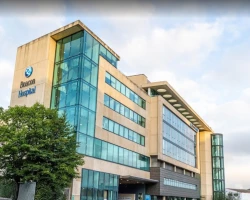
Dublin, Ireland
Specializations: Cardiac surgery, Vascular surgery, Thoracic surgery, Neurosurgery, Spine surgery, Orthopedic surgery, Oncology
Located in Sandyford, South Dublin, Beacon Hospital is one of the most technologically advanced private hospital’s in all of Europe.With 180 inpatients beds, 1400 healthcare
read more
1
from Alex
November 23, 2023
This clinic is very poor, you are dealt with like you are a sheep and made to feel like you are another number to make cash from. They provide no explanation and point you towards the most profitable procedure not what's best for the patient. Once admitted the care is lacking and hygiene poor, they only gave me a bed for ten minutes after surgery before whisking it away and plonking me on a wheelchair in the so called "holistoc room", they had no intention of making it a place you would want stay, clearly once they have there money they boot you out to get the next paycheck in. Highly recommend going elsewhere where you may get treated as a person.
5
from Maire Welby
November 09, 2023
Doctor and nurse in emergency room so nice to me, also mri staff lovely.
5
from Mark Walmsley
May 02, 2022
Very futuristic and beautiful clinic, was leaving somebody else off but even know visitors were not allowed at the time of posting, I was able to stay through the check in process.
Staff were very friendly and always had time to help. Dinner for patient was presented by a menu, and you got choice.
I would highly recommend this hospital/clinic for anyone who needs urgent help.
There is also an in-house Chapel, pharmacy and small shop.
Prices for popular procedures:
-
Thoracoplasty including sternoplasty
≈ $14,071
-
Diagnostic thoracoscopy
≈ $6,081
-
Dual chamber pacemaker insertion
≈ $14,860
-
Carotid endarterectomy (CEA)
≈ $9,393
-
Foam sclerotherapy (Unilateral)
≈ $1,732
-
Coronary artery bypass graft (CABG)
≈ $52,994
3.9
5 reviews
1
from Alex
November 23, 2023
This clinic is very poor, you are dealt with like you are a sheep and made to feel like you are another number to make cash from. They provide no explanation and point you towards the most profitable procedure not what's best for the patient. Once admitted the care is lacking and hygiene poor, they only gave me a bed for ten minutes after surgery before whisking it away and plonking me on a wheelchair in the so called "holistoc room", they had no intention of making it a place you would want stay, clearly once they have there money they boot you out to get the next paycheck in. Highly recommend going elsewhere where you may get treated as a person.
5
from Maire Welby
November 09, 2023
Doctor and nurse in emergency room so nice to me, also mri staff lovely.
5
from Mark Walmsley
May 02, 2022
Very futuristic and beautiful clinic, was leaving somebody else off but even know visitors were not allowed at the time of posting, I was able to stay through the check in process.
Staff were very friendly and always had time to help. Dinner for patient was presented by a menu, and you got choice.
I would highly recommend this hospital/clinic for anyone who needs urgent help.
There is also an in-house Chapel, pharmacy and small shop.

Galway City, Ireland
Specializations: Cardiac surgery, Vascular surgery, Thoracic surgery, Neurosurgery, Spine surgery, Orthopedic surgery, Oncology
Galway Clinic, part of Blackrock Health, is the leading provider of private cancer care in the West of Ireland. It has 120 Consultants across 60
read more
5
from John Murphy
December 07, 2023
Incredible experience from start to finish. Appointment time 230. In doctor's office at 235, out on the road home by 345. Staff extremely friendly. Could not have asked for better. Also exquisitely clean. 10/10
1
from Peter Pumpkin Head
November 27, 2023
Overall, not a great experience and wouldn't use them again. I went in for a heart ultrasound, stress test and a plaque test.
The stress test was a nightmare. I was put on a running machine with a face mask. I kid you not. I was forced to undergo a stress test on a running machine where I could barely breathe. It was an horrendous experience.
I really thought I was going to have a heart attack there and then on the machine as they increased the stress on my heart. How they could expect to get accurate results based on that is beyond me.
I paid on the day and shortly afterwards got an additional bill....then another bill. I still don't know what the additional costs were for were for. I couldn't work out the statement that accompanied the bill as it was overly complicated.
I went to my doctors a few months later about another minor matter and though it might be a good time to discuss my tests. He didn't know what I was talking about. He'd received nothing.
I tried ringing radiology several times and it always went to voice mail. The receptionist told me to send an email which I did.
I wrote an email and I did receive a reply saying they would send out one of the test results to my doctor but wanted his address. This was odd as my details and those of my doctor were on my initial induction form.
I explained in a replying email that there were several tests...not just one and could they forward them onto him as well....nothing. No reply.
I've never heard anything back and at this stage have given up trying to get my results posted out.
I really would not recommend them based on my experience.
5
from carol courtney
November 09, 2023
Had an unfortunate accident which brought me to the ED.
The receptionists were very efficient and very pleasant to deal with.
I was so fortunate to have had Dr David Foley looking after my case, he was extremely empathetic to my predicament and made me feel at ease at such a stressful/painful time.
He referred me to Dr Stefan Byrne in Orthopedics who dealt with me very promptly, he was very professional. I left confident in his care and thankful for the kindness of his receptionist.
Overall for such a traumatic time I was so grateful to everyone for making it that bit easier.....except for the pay for parking machine which refused to give a receipt one day and also refused to give my ticket back another day after paying
Prices for popular procedures:
-
Thoracoplasty including sternoplasty
≈ $14,071
-
Diagnostic thoracoscopy
≈ $6,081
-
Carotid endarterectomy (CEA)
≈ $9,393
-
Foam sclerotherapy (Unilateral)
≈ $1,732
-
Coronary artery bypass graft (CABG)
≈ $52,994
-
Repair of diaphragmatic hernia
≈ $2,778
3.9
5 reviews
5
from John Murphy
December 07, 2023
Incredible experience from start to finish. Appointment time 230. In doctor's office at 235, out on the road home by 345. Staff extremely friendly. Could not have asked for better. Also exquisitely clean. 10/10
1
from Peter Pumpkin Head
November 27, 2023
Overall, not a great experience and wouldn't use them again. I went in for a heart ultrasound, stress test and a plaque test.
The stress test was a nightmare. I was put on a running machine with a face mask. I kid you not. I was forced to undergo a stress test on a running machine where I could barely breathe. It was an horrendous experience.
I really thought I was going to have a heart attack there and then on the machine as they increased the stress on my heart. How they could expect to get accurate results based on that is beyond me.
I paid on the day and shortly afterwards got an additional bill....then another bill. I still don't know what the additional costs were for were for. I couldn't work out the statement that accompanied the bill as it was overly complicated.
I went to my doctors a few months later about another minor matter and though it might be a good time to discuss my tests. He didn't know what I was talking about. He'd received nothing.
I tried ringing radiology several times and it always went to voice mail. The receptionist told me to send an email which I did.
I wrote an email and I did receive a reply saying they would send out one of the test results to my doctor but wanted his address. This was odd as my details and those of my doctor were on my initial induction form.
I explained in a replying email that there were several tests...not just one and could they forward them onto him as well....nothing. No reply.
I've never heard anything back and at this stage have given up trying to get my results posted out.
I really would not recommend them based on my experience.
5
from carol courtney
November 09, 2023
Had an unfortunate accident which brought me to the ED.
The receptionists were very efficient and very pleasant to deal with.
I was so fortunate to have had Dr David Foley looking after my case, he was extremely empathetic to my predicament and made me feel at ease at such a stressful/painful time.
He referred me to Dr Stefan Byrne in Orthopedics who dealt with me very promptly, he was very professional. I left confident in his care and thankful for the kindness of his receptionist.
Overall for such a traumatic time I was so grateful to everyone for making it that bit easier.....except for the pay for parking machine which refused to give a receipt one day and also refused to give my ticket back another day after paying
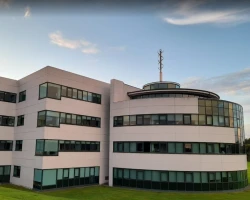
Dublin, Ireland
Specializations: Cardiac surgery, Vascular surgery, Thoracic surgery, Neurosurgery, Spine surgery, Orthopedic surgery, Oncology
We offer patients easy access to scheduled and emergency care delivered by leading consultants.We provide access to private patient consultation suites, digital diagnostic radiology platforms
read more
5
from Erin Reston
July 19, 2023
Fabulous GP service!! Especially Nadia on the front desk. She always does her best to help/accommodate you.
1
from Nahla Alaa
July 15, 2023
I dont know where to start, my problem is with the reception
1- I did blood tests for pregnancy , and no body notified me and when the results appeared I booked an online call with a doctor who completely ignored me and did not call.
2 - I registered for maternity care with them and after I delivered my baby they told they lost the application and I had to come over and refill it again or I will need to pay for the 2 and 6 weeks visit which should be free.
3- 5 out of 10 times I call them to book appointments they dont answer.
4- one time I went for a gp visit and I paid and when I left the reception lady called and and asked me to pay again she told me she cant see my payment.I had to send her the invoice and bank statement to convince her!
5
from Eoin Cl
December 28, 2022
Great service with very caring staff - We joined about 6 months ago as we had a newborn. Great service and always take time to listen to what you need and will always do their best to fit you in for an appointment. Highly recommend!
Prices for popular procedures:
-
Thoracoplasty including sternoplasty
≈ $14,071
-
Diagnostic thoracoscopy
≈ $6,081
-
Dual chamber pacemaker insertion
≈ $14,860
-
Carotid endarterectomy (CEA)
≈ $9,393
-
Foam sclerotherapy (Unilateral)
≈ $1,732
-
Coronary artery bypass graft (CABG)
≈ $52,994
2.9
5 reviews
5
from Erin Reston
July 19, 2023
Fabulous GP service!! Especially Nadia on the front desk. She always does her best to help/accommodate you.
1
from Nahla Alaa
July 15, 2023
I dont know where to start, my problem is with the reception
1- I did blood tests for pregnancy , and no body notified me and when the results appeared I booked an online call with a doctor who completely ignored me and did not call.
2 - I registered for maternity care with them and after I delivered my baby they told they lost the application and I had to come over and refill it again or I will need to pay for the 2 and 6 weeks visit which should be free.
3- 5 out of 10 times I call them to book appointments they dont answer.
4- one time I went for a gp visit and I paid and when I left the reception lady called and and asked me to pay again she told me she cant see my payment.I had to send her the invoice and bank statement to convince her!
5
from Eoin Cl
December 28, 2022
Great service with very caring staff - We joined about 6 months ago as we had a newborn. Great service and always take time to listen to what you need and will always do their best to fit you in for an appointment. Highly recommend!
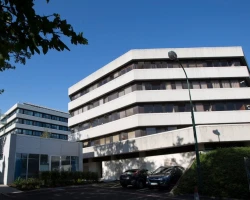
Blackrock, Ireland
Specializations: Cardiac surgery, Vascular surgery, Thoracic surgery, Neurosurgery, Spine surgery, Orthopedic surgery, Oncology
Blackrock Clinic is the leading and longest established private hospital and clinic in Ireland. Since it opened in the mid 1980s, the Clinic has
read more
1
from Daithí O'G
December 09, 2023
We had the misfortune of Dad being referred to the care of plastic surgeon Catriona Lawlor at St. Vincent's Private for stage 2a Skin Melanoma. She was medically negligent to my father in that she didn't carry out any regular post care checks after the primary treatment. I asked her why and she came up with lies regarding covid, despite the National Screening Service telling me that there were no restrictions on cancer checks at the times she claims she didn't check my father for his own safety. She is a liar.
My father again had the misfortune of coming under Prof. John Crown (or Professor Clown as we came to know him due his ridiculous and aggressive outbursts) once cancer progressed. He delayed my father's cancer treatment by 2 months because he wanted to conduct tests to identify the correct type of immunotherapy, despite these results already being available from 18 months prior. He put my father under 3 unnecessary and risky biopsies, one of which was a liver wedge section performed by a liver transplant surgeon. There were also 4 MRIs indicating stroke in this time, we're told most likely due to the spread of cancer. It took 4 MRIs and 7 weeks from 1st MRI in the care of St. Vincent's Private before my father was referred to a neurologist for tests and appropriate medication.
At one point my father's nutritional supplements were withdrawn without discussion with my father, nor us. He was put into a private room and Professor Clown told me to expect the worst within the next two weeks. I immediately requested nutritional intervention and this was given. My father survived for over a year after that. Prof. Clown then tried to discharge my heavily dependent father onto my mother to which I refused to do without additional help outside of basic HSE home package. Prof. Clown's only option then was to leave the medical team, for which, he called my mother and sister into a meeting and accused them of being abusive because at that meeting they queried his treatment of my father and why no regular checks were done on my father. Prof. Clown claimed no checks were needed earlier but then said he never stated such at this meeting. He went on to send an email from the ward email address claiming we were abusive and threatening.
For original treatment under Catriona Lawlor my parents were sent incorrect bills for which the finance department said they would fix. They never corrected their mistakes and a bill for €30 was sent to the debt collector for arrears. After my father left St. Vincent's Private there was a shortfall of €13,000 because VHI didn't cover the private room for my father in which he was placed to die prematurely. To this day no bill has been sent despite my queries to Paula Ryan and Dr. David Fennelly (took over from Prof. Clown, another member of the circus). We all know that this is due to their medical negligence.
Be extremely careful if your loved one is under the care of this hospital. Private healthcare is completely unregulated in Ireland. Should any doctor in this hospital mess up you are on your own. The doctors are contractors and legally independent of the hospital itself. The hospital will not investigate and neither will the Ombudsman, HSE, Dept. of Health, etc.
VHI covered 6 months of care in a private hospital for my father. I appealed to the management for extended care and treatment due their medical negligence. This was refused and Dr. David Fennelly put pressure on my father to choose the hospice for further care. I had to email Fennelly to take pressure off my father and give him space to decide. He was cut from the same ilk as Prof. Clown. My father survived 9 months in the hospice without any follow up with scans or care of an oncologist nor neurologist despite our requests to Dr. Fennelly for a plan of care to be ongoing.
This hospital is unsafe and completely disorganised. Should any of the above be untrue I look forward to their legal letter for defamation but I know that won't happen because my defence would be the truth which they know themselves.
5
from Isha Choudhary
August 21, 2023
I am writing to express my deepest gratitude for the exceptional care and expertise provided by Dr. Anthony Stafford during a critical period in my life. Dr. Stafford's remarkable skills as a surgeon not only saved my life, but also transformed a terrifying situation into a remarkable journey of healing and recovery.
Facing a life-altering medical issue was undoubtedly one of the most challenging experiences I've ever encountered. However, Dr. Stafford's accurate diagnosis and prompt action gave me the hope and strength to overcome the ordeal. He demonstrated an unparalleled level of professionalism and dedication, reminiscent of a guardian angel who emerged in my life precisely when I needed him the most.
What truly sets Dr. Stafford apart is his unwavering commitment to not only address the medical concern at hand, but also considering the broader implications for my overall well-being. His expertise ensured that the surgical intervention was tailored to minimize impact on my body, allowing me to embark on a path towards a healthy life. As a woman, the significance of his approach in prioritizing my health and recovery cannot be overstated.
In essence, Dr. Stafford's impact extends far beyond the realm of medical expertise. He restored my health, instilled hope, and empowered me to embrace life with renewed vigor. Every step of the way, he exuded compassion and professionalism, creating an environment where I felt both cared for and confident in the journey ahead.
I owe my gratitude and a debt of profound appreciation to Dr. Anthony Stafford for being the beacon of light that guided me through the darkness. His contributions to my well-being have left an indelible mark on my life, and I am forever thankful for his presence during my time of need.
Regards,
Isha
5
from John Geraghty
July 01, 2023
My sincere appreciation for the diagnosis, and treatment. I’m looking forward to getting back out there and living my life.
The feeling of gratitude is so difficult for me to put into words.
I’d just like to let all those working here know what a good job they’ve done. You’re a great team, thank you.
John
Prices for popular procedures:
-
Thoracoplasty including sternoplasty
≈ $14,071
-
Diagnostic thoracoscopy
≈ $6,081
-
Dual chamber pacemaker insertion
≈ $14,860
-
Carotid endarterectomy (CEA)
≈ $9,393
-
Foam sclerotherapy (Unilateral)
≈ $1,732
-
Coronary artery bypass graft (CABG)
≈ $52,994
3.8
5 reviews
1
from Daithí O'G
December 09, 2023
We had the misfortune of Dad being referred to the care of plastic surgeon Catriona Lawlor at St. Vincent's Private for stage 2a Skin Melanoma. She was medically negligent to my father in that she didn't carry out any regular post care checks after the primary treatment. I asked her why and she came up with lies regarding covid, despite the National Screening Service telling me that there were no restrictions on cancer checks at the times she claims she didn't check my father for his own safety. She is a liar.
My father again had the misfortune of coming under Prof. John Crown (or Professor Clown as we came to know him due his ridiculous and aggressive outbursts) once cancer progressed. He delayed my father's cancer treatment by 2 months because he wanted to conduct tests to identify the correct type of immunotherapy, despite these results already being available from 18 months prior. He put my father under 3 unnecessary and risky biopsies, one of which was a liver wedge section performed by a liver transplant surgeon. There were also 4 MRIs indicating stroke in this time, we're told most likely due to the spread of cancer. It took 4 MRIs and 7 weeks from 1st MRI in the care of St. Vincent's Private before my father was referred to a neurologist for tests and appropriate medication.
At one point my father's nutritional supplements were withdrawn without discussion with my father, nor us. He was put into a private room and Professor Clown told me to expect the worst within the next two weeks. I immediately requested nutritional intervention and this was given. My father survived for over a year after that. Prof. Clown then tried to discharge my heavily dependent father onto my mother to which I refused to do without additional help outside of basic HSE home package. Prof. Clown's only option then was to leave the medical team, for which, he called my mother and sister into a meeting and accused them of being abusive because at that meeting they queried his treatment of my father and why no regular checks were done on my father. Prof. Clown claimed no checks were needed earlier but then said he never stated such at this meeting. He went on to send an email from the ward email address claiming we were abusive and threatening.
For original treatment under Catriona Lawlor my parents were sent incorrect bills for which the finance department said they would fix. They never corrected their mistakes and a bill for €30 was sent to the debt collector for arrears. After my father left St. Vincent's Private there was a shortfall of €13,000 because VHI didn't cover the private room for my father in which he was placed to die prematurely. To this day no bill has been sent despite my queries to Paula Ryan and Dr. David Fennelly (took over from Prof. Clown, another member of the circus). We all know that this is due to their medical negligence.
Be extremely careful if your loved one is under the care of this hospital. Private healthcare is completely unregulated in Ireland. Should any doctor in this hospital mess up you are on your own. The doctors are contractors and legally independent of the hospital itself. The hospital will not investigate and neither will the Ombudsman, HSE, Dept. of Health, etc.
VHI covered 6 months of care in a private hospital for my father. I appealed to the management for extended care and treatment due their medical negligence. This was refused and Dr. David Fennelly put pressure on my father to choose the hospice for further care. I had to email Fennelly to take pressure off my father and give him space to decide. He was cut from the same ilk as Prof. Clown. My father survived 9 months in the hospice without any follow up with scans or care of an oncologist nor neurologist despite our requests to Dr. Fennelly for a plan of care to be ongoing.
This hospital is unsafe and completely disorganised. Should any of the above be untrue I look forward to their legal letter for defamation but I know that won't happen because my defence would be the truth which they know themselves.
5
from Isha Choudhary
August 21, 2023
I am writing to express my deepest gratitude for the exceptional care and expertise provided by Dr. Anthony Stafford during a critical period in my life. Dr. Stafford's remarkable skills as a surgeon not only saved my life, but also transformed a terrifying situation into a remarkable journey of healing and recovery.
Facing a life-altering medical issue was undoubtedly one of the most challenging experiences I've ever encountered. However, Dr. Stafford's accurate diagnosis and prompt action gave me the hope and strength to overcome the ordeal. He demonstrated an unparalleled level of professionalism and dedication, reminiscent of a guardian angel who emerged in my life precisely when I needed him the most.
What truly sets Dr. Stafford apart is his unwavering commitment to not only address the medical concern at hand, but also considering the broader implications for my overall well-being. His expertise ensured that the surgical intervention was tailored to minimize impact on my body, allowing me to embark on a path towards a healthy life. As a woman, the significance of his approach in prioritizing my health and recovery cannot be overstated.
In essence, Dr. Stafford's impact extends far beyond the realm of medical expertise. He restored my health, instilled hope, and empowered me to embrace life with renewed vigor. Every step of the way, he exuded compassion and professionalism, creating an environment where I felt both cared for and confident in the journey ahead.
I owe my gratitude and a debt of profound appreciation to Dr. Anthony Stafford for being the beacon of light that guided me through the darkness. His contributions to my well-being have left an indelible mark on my life, and I am forever thankful for his presence during my time of need.
Regards,
Isha
5
from John Geraghty
July 01, 2023
My sincere appreciation for the diagnosis, and treatment. I’m looking forward to getting back out there and living my life.
The feeling of gratitude is so difficult for me to put into words.
I’d just like to let all those working here know what a good job they’ve done. You’re a great team, thank you.
John

Dublin, Ireland
Specializations: Cardiac surgery, Vascular surgery, Thoracic surgery, Neurosurgery, Orthopedic surgery, Oncology
St Vincent’s Private Hospital is the single, biggest acute private hospital in Dublin. We offer the highest number of consultants and the widest range of
read more
5
from Sarah Shallow
December 07, 2023
Well I loved how I was cared for and treated by the staff, doctors and nurses but who actually loves being admitted to hospital. Both my grandparents passed away in St James after battling chronic illnesses. The hospital did a tremendous job whilst caring and helping my grandparents and myself.
1
from Edgar Salgueiro
December 05, 2023
After 10 hours waiting for be attended in the Ermegency Dep. the doctor kick me out saying it wasn’t an emergency and without a prescription. Next day I went to a private GP and they gived me a prescription and look after me very well. It’s the worst hospital I’ve ever visited and I had one of the worst experiences of my life. (Also I
paid 100€ for it, thieves)
1
from Rita Khtiar
October 14, 2023
My mom just returned from the A+E, as a qualified nurse myself, I'm appalled at the treatment and medical negligence of the Doctor on duty working A+E. Not only did you mix up her name and confuse her for another patient who had the same first name, you failed to do your safety checks to ensure you got the right patient and confused my mom with CHEST PAIN for someone who was DRUNK, You then dismissed her anxiety and told her to just calm down!? You gave her no advice, no comfort, if the job is that hard for you and is causing you to treat your patients like this, you need to find another job. I'll be taking this further and making a formal complaint.
Prices for popular procedures:
-
Thoracoplasty including sternoplasty
≈ $14,071
-
Video-assisted thoracic surgery (VATS)
≈ $38,966
-
Diagnostic thoracoscopy
≈ $6,081
-
Foam sclerotherapy (Unilateral)
≈ $1,732
-
Coronary artery bypass graft (CABG)
≈ $52,994
-
Repair of diaphragmatic hernia
≈ $2,778
3.6
5 reviews
5
from Sarah Shallow
December 07, 2023
Well I loved how I was cared for and treated by the staff, doctors and nurses but who actually loves being admitted to hospital. Both my grandparents passed away in St James after battling chronic illnesses. The hospital did a tremendous job whilst caring and helping my grandparents and myself.
1
from Edgar Salgueiro
December 05, 2023
After 10 hours waiting for be attended in the Ermegency Dep. the doctor kick me out saying it wasn’t an emergency and without a prescription. Next day I went to a private GP and they gived me a prescription and look after me very well. It’s the worst hospital I’ve ever visited and I had one of the worst experiences of my life. (Also I
paid 100€ for it, thieves)
1
from Rita Khtiar
October 14, 2023
My mom just returned from the A+E, as a qualified nurse myself, I'm appalled at the treatment and medical negligence of the Doctor on duty working A+E. Not only did you mix up her name and confuse her for another patient who had the same first name, you failed to do your safety checks to ensure you got the right patient and confused my mom with CHEST PAIN for someone who was DRUNK, You then dismissed her anxiety and told her to just calm down!? You gave her no advice, no comfort, if the job is that hard for you and is causing you to treat your patients like this, you need to find another job. I'll be taking this further and making a formal complaint.

Dublin, Ireland
Specializations: Cardiac surgery, Vascular surgery, Thoracic surgery, Neurosurgery, Spine surgery, Orthopedic surgery, Oncology
St James’s Hospital is Ireland’s largest acute academic teaching hospital and is based in Dublin’s south inner city. Our fundamental purpose is the delivery of
read more
Procedure price distribution in Ireland
Kidner procedure:
$2,327
This price found in Ireland, Dublin
$2,327
This price found in Ireland, Dublin
Minimum Average Maximum
Procedure prices in popular countries:
Kidner procedure:
Turkey
$1,372 - 1,372
in
30 clinics
Germany
$4,838 - 4,838
in
45 clinics
China
$5,480 - 5,480
in
6 clinics
United States
$6,220 - 6,220
in
23 clinics
Israel
$6,635 - 6,635
in
16 clinics
Countries with the highest number of clinics offering the procedures treatment:
Kidner procedure:
worldwide
770 clinics
United Kingdom
64 clinics
Germany
45 clinics
Brazil
33 clinics
Australia
31 clinics
Turkey
30 clinics
Clinics grouping by rating
Clinic with the highest rating of 3.9 — Blackrock Health Galway Clinic in Galway City, Ireland and 1 more, clinic with the most reviews number of 567 — St James's Hospital in Dublin, Ireland.
Quick navigation
Procedures
Diseases
- Ankle replacement ≈ $24,799
- Finger transposition by request
- Partial hip replacement ≈ $29,838
- Partial shoulder replacement ≈ $12,174
- Patellofemoral replacement ≈ $18,958
- Revision ACL reconstruction ≈ $11,922
- Revision PCL reconstruction ≈ $9,667
- Total hip replacement (Bilateral) ≈ $70,576
- Total shoulder replacement ≈ $28,164
- Clubfoot
- Elbow instability
- Elbow stiffness
- Hip deformity
- Hip fracture
- Hip infection
- Hip osteoarthritis
- Hip osteonecrosis
- Knee osteoarthritis
- Loose body in joint
- Medial compartment osteoarthritis
- Meniscus tear
- Osgood-Schlatter disease
- Polydactyly
- Rheumatoid arthritis
- Shoulder fracture
- Shoulder osteoarthritis
- Syndactyly
- Synovitis
- Unicompartmental arthritis
